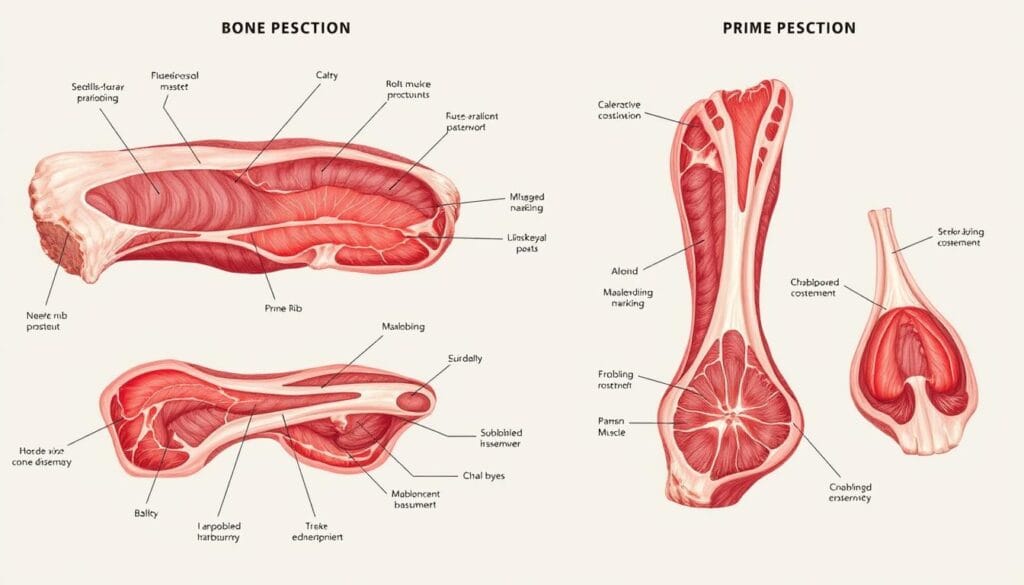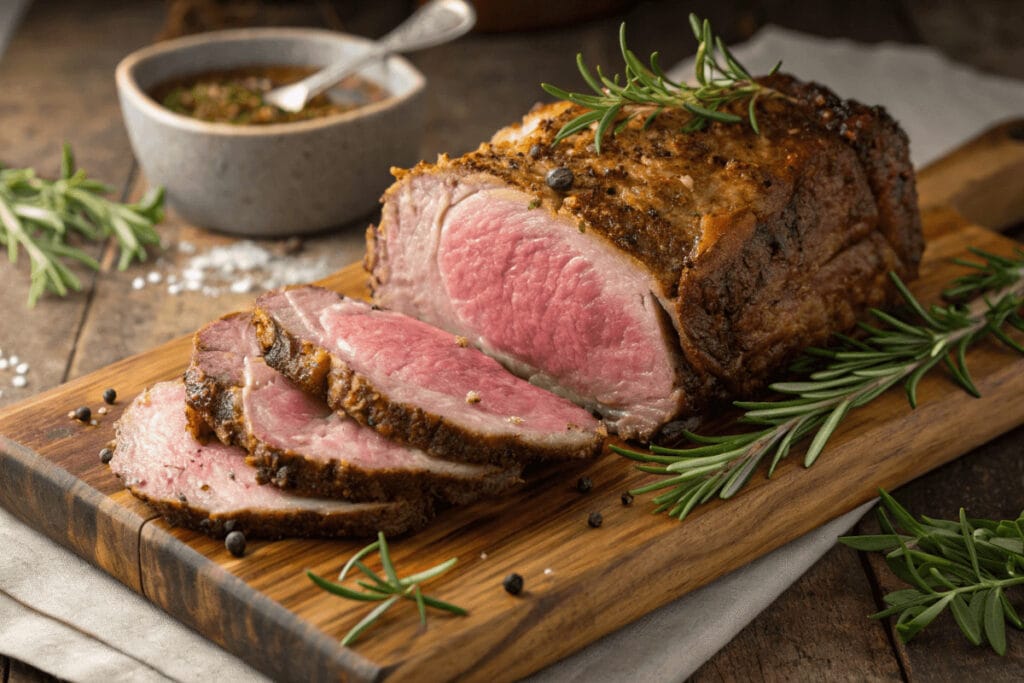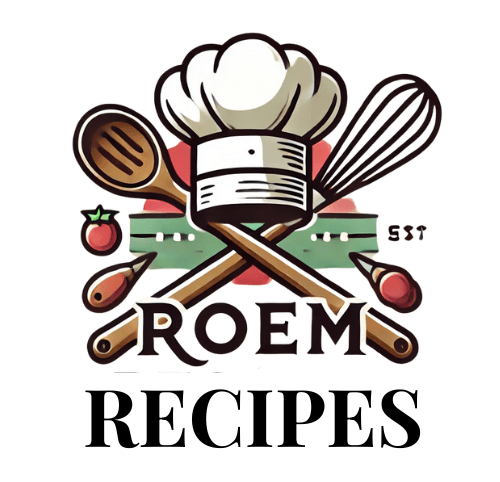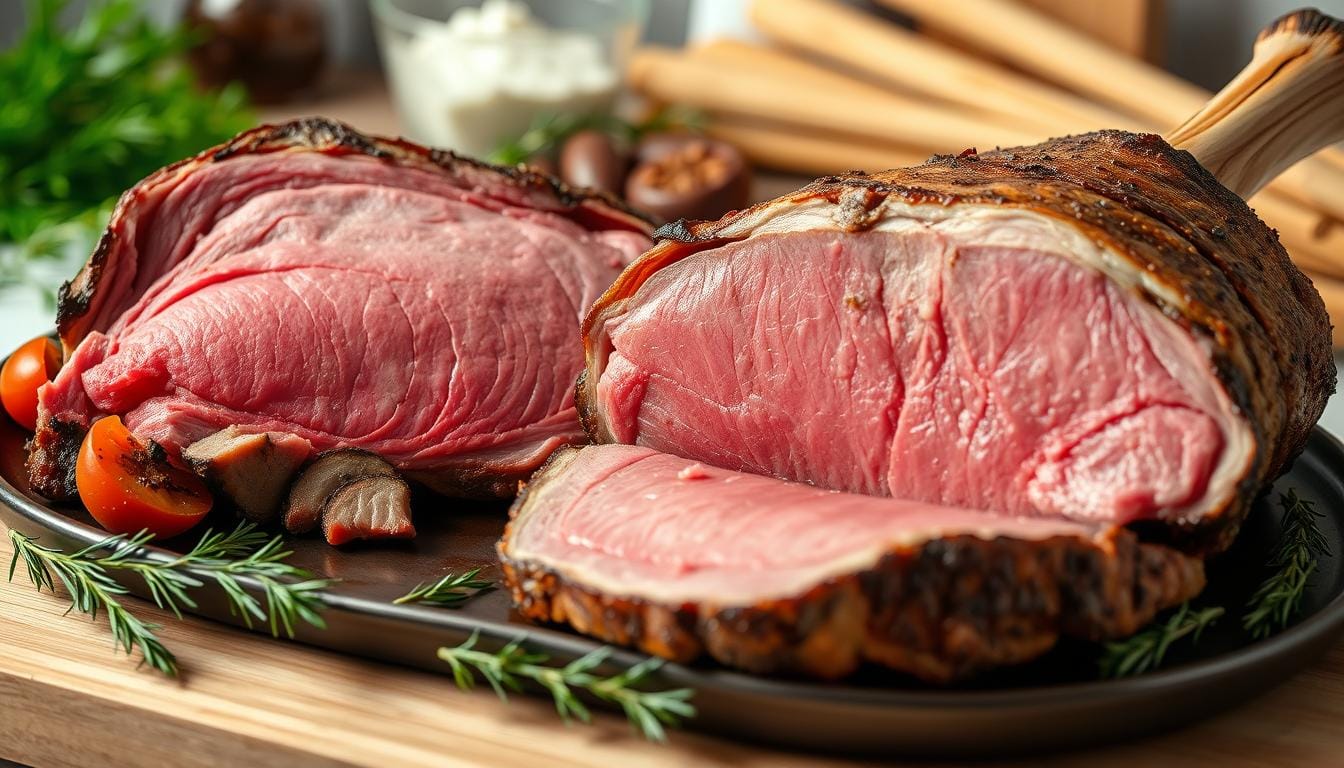In my grandmother’s kitchen, I watched her prepare a special cut of beef for our holiday meal. The smell of roasting meat filled the air. It made me curious about the difference between prime rib and rib roast.
Many people wonder, “Is a rib roast the same as a prime rib?” The world of beef cuts can be complex. Cows have 13 ribs on each side. Prime rib comes from the center section of seven ribs.
Even though people often use these terms the same way, there are small differences. These differences can change how your meal tastes. Knowing these differences helps you choose and cook your beef better.
The debate between prime rib and rib roast is more than just words. It’s about the special qualities of each cut. Things like USDA grading and fat content play a big role.
Key Takeaways
- Prime rib comes from a specific seven-rib section of the cow
- Not all rib roasts are technically “prime” grade
- A full prime rib can weigh up to 30 pounds
- USDA prime beef must contain 8% to 13% fat
- Standing rib roasts and prime rib roasts are closely related but not identical
Understanding Rib Cuts: Basic Terminology
Exploring beef cuts can seem complex. But knowing about rib cuts makes you a better meat lover. Cows have 13 ribs on each side. Prime rib comes from the middle, with seven ribs.

Key Terms in Beef Rib Cuts
When we talk about prime rib or rib roast, some key terms are important. The rib primal cut is a major section for butchers. It’s famous for its marbling and tenderness because of low muscle use.
- Ribeye: A steak cut from the rib section
- Prime Rib Roast: A larger cut for special occasions
- Standing Rib Roast: Prime rib cooked with bones
Anatomical Location of Rib Cuts
The rib section is in the cow’s upper part, between chuck and loin. Prime rib roast comes from ribs 6 through 12. This is the tender and flavorful part.
| Cut Type | Typical Weight | Cooking Method |
|---|---|---|
| Boneless Ribeye Roast | 6 pounds | Roasting |
| Ribeye Steak | 12-16 ounces | Grilling/Searing |
USDA Grading System Explained
The term “prime” in prime rib doesn’t mean USDA Prime grade. The USDA grades beef by marbling, age, and quality. Prime, Choice, and Select are the main grades.
Understanding beef cuts is like learning a delicious language of culinary expertise.
Is a Rib Roast the Same as a Prime Rib?
Many meat lovers find it hard to tell the difference between a rib roast and prime rib. While they’re often used the same way, they’re not exactly the same. A prime rib roast is a special type of rib roast with its own features.

- All standing rib roasts are prime rib roasts
- Not all prime rib roasts are standing rib roasts
- Prime rib comes specifically from ribs 6 to 12 on a cow
A prime rib roast comes from the primal rib section of the cow. Cows have 26 ribs, with prime rib being the middle seven. It has special qualities like:
| Characteristic | Prime Rib Details |
|---|---|
| Weight Range | Up to 16 pounds |
| Typical Preparation | Bone-in |
| Fat Content | 8-13% (USDA Prime grade) |
“Not all rib roasts are created equal, and prime rib represents the premium cut from this section.” – Culinary Expert
When picking your cut, remember prime rib has more marbling and flavor than regular rib roasts. Its bone-in nature also makes it taste richer and more tender.
The Origins of Prime Rib: Location and Cut Specifics
Prime rib roast is a top-notch cut of beef. It’s known for its rich marbling and amazing flavor. Meat lovers adore it for these reasons.
Prime Rib’s Position on the Cow
The prime rib roast comes from a special part of the cow. It’s cut from the rib section, between ribs six and twelve. This spot is great for several reasons:
- It has a lot of muscle weight
- It’s full of intramuscular fat
- It’s very tender
Why It’s Called “Prime”
The word “prime” comes from the USDA grading system. Not every rib roast is prime. Prime-grade beef is the best, with:
- Dense, even marbling
- Super tender meat
- Outstanding flavor
Standard Size and Weight
Prime rib roasts usually weigh 4-5 pounds. Sometimes, they can be as big as 30 pounds. Butchers often cut these into smaller pieces for home cooking.
| Cut Characteristic | Specification |
|---|---|
| Typical Weight | 4-5 pounds |
| Full Roast Weight | Up to 30 pounds |
| Ribs Included | Ribs 6-12 |
| USDA Grade | Prime (highest quality) |
“The prime rib roast represents the pinnacle of beef excellence, a cut that transforms any meal into a memorable culinary experience.” – Professional Chef
Defining Characteristics of a Rib Roast
Exploring the difference between prime rib and rib roast opens a world of beef cuts. A rib roast is a big cut from the cow’s rib section, weighing 12 to 20 pounds. It’s great for many meals and occasions.
- Substantial size, ranging from 12-20 pounds
- Can be purchased bone-in or boneless
- Contains 6-7 ribs typically
- Offers rich marbling and intense beef flavor
“A rib roast is not just a cut of meat, it’s a culinary experience waiting to be transformed.” – Professional Chef
When comparing prime rib vs rib roast, knowing the cut’s details is key. The rib roast can be cooked in many ways. This makes it perfect for both home cooks and professional chefs.
| Characteristic | Rib Roast Details |
|---|---|
| Weight Range | 12-20 pounds |
| Number of Ribs | 6-7 ribs |
| Preparation Options | Bone-in or boneless |
| Serving Capacity | 8-10 people |
Knowing the difference between prime rib and rib roast helps you make better choices. It ensures a great dining experience every time.
Bone-In vs. Boneless: Impact on Flavor and Cooking
Choosing between bone-in and boneless prime rib or rib roast is key. It affects how you cook, the taste, and your dining experience.
Knowing the differences between bone-in and boneless cuts is crucial. It helps you decide for your next cooking project.
Benefits of Bone-In Cuts
Bone-in prime rib has many benefits:
- It enhances flavor during cooking
- It keeps meat moist
- It offers a richer taste
“The bone acts like a natural conductor, transferring heat and adding depth to your prime rib’s flavor profile.” – Professional Chef
Advantages of Boneless Options
Boneless rib roast has its own perks for home cooks:
- It’s easier to carve and serve
- It cooks more evenly
- Seasoning is simpler
- It cooks faster
When cooking, think about what you need. Bone-in cuts are 14 to 22 pounds. Boneless cuts are 7 to 11 pounds. Both cook at 225°F. The ideal internal temperature is between rare and well-done.
Your choice depends on what you like, your cooking skills, and the experience you want to have.
Price Comparison and Value Considerations
When looking at prime rib vs rib roast, knowing the prices is key for those watching their budget. The average price for beef is $7.39 per pound. This makes the pricing of different cuts very interesting.
Bone-in cuts like prime rib usually offer better value than boneless ones. Prices can change a lot based on a few important things:
- Cut quality and USDA grading
- Bone content
- Meat marbling
- Seasonal demand
People asking “Is a rib roast the same as a prime rib?” should know they’re similar but not the same price. Prime cuts are pricier because they’re of higher quality and more tender.
| Beef Cut Type | Average Price Range | Value Consideration |
|---|---|---|
| Ribeye Steak | $12.00 – $15.00/lb | Premium cut with high marbling |
| Prime Rib | $15.00 – $20.00/lb | Highest quality, exceptional flavor |
| Rib Roast | $10.00 – $14.00/lb | Good alternative with solid flavor |
To get more value, think about buying in bulk or trying different cooking methods. These can make cheaper cuts taste amazing.
“Smart purchasing means understanding the balance between cost and quality in meat selection.”
Things like inflation and the cost of feed affect beef prices. Buying in bulk can cut costs by up to 28.57%. This makes smart buying a smart move for meat lovers.
Flavor Profiles and Marbling Differences
Exploring the difference between prime rib and rib roast is key for meat lovers. Their unique flavors come from how fat is spread out and marbled. This affects both taste and how tender the meat is.
Prime rib roast is known for its rich fat marbling, especially from the cow’s front end. This fat makes it a luxurious treat, unlike other beef cuts.
Fat Distribution Patterns
Fat distribution is vital for meat’s flavor and texture. Prime rib roast has special marbling:
- More fat in the chuck end (ribs 6-9)
- Less fat in the loin end (ribs 10-12)
- Fat veins through the muscles
Taste Variations Between Cuts
The marbling in prime rib roast makes its flavor stand out. Here’s a taste comparison:
| Cut | Marbling Quality | Flavor Intensity |
|---|---|---|
| Prime Rib Roast | High | Rich, Buttery |
| Ribeye Steak | Moderate to High | Bold, Robust |
Choosing your cut wisely is important. USDA Prime grade has the most marbling. It ensures a tender, flavorful experience.
“The secret to an unforgettable meal lies in understanding the subtle nuances of meat marbling.” – Culinary Expert
Cooking Methods and Preparation Techniques
Learning how to cook a prime rib roast can change your cooking game. Prime rib and rib roast need different care to get the best taste and texture.
The cooking method depends on the cut’s type. Prime rib is best slow-roasted. It can be up to 16 pounds, so it needs careful heat control. Chefs say to roast it at 250°F first, then at high heat for a crispy crust.
- Preheat oven to 250°F for initial slow cooking
- Use a meat thermometer to track internal temperature
- Rest meat for 15-20 minutes after cooking
- Aim for medium-rare at 130-135°F
The cooking prime rib vs rib roast method is a bit different. Rib roast cooks faster and can dry out, so timing and heat control are key.
“The key to perfect prime rib is patience and precision in temperature management.” – Professional Chef
Try sous vide for even cooking. It keeps the meat moist and tender. Seasoning is also vital to bring out the meat’s natural flavors.
Pro tip: Let your meat rest at room temperature for 1-2 hours before cooking. This helps with even heat and better results.
Temperature Guidelines and Cooking Times
Mastering prime rib cooking requires precise temperature control and timing. Knowing how to cook a prime rib roast perfectly is key. It can make your meal go from good to exceptional.
Internal Temperature Recommendations
Getting the perfect doneness for your prime rib roast is all about watching the internal temperature. Here’s a detailed guide on recommended temperatures:
- Rare: 120-125°F (bright red center)
- Medium Rare: 130-135°F (pink center, most popular)
- Medium: 140-145°F (warm pink center)
- Medium Well: 150-155°F (slight pink)
- Well Done: 160°F and above (minimal pink)
Strategic Cooking Approach
Professional chefs suggest pulling the meat 5-10°F below your desired final temperature. This method accounts for the heat that builds up during the resting period.
“The secret to a perfect prime rib is patience and precise temperature control.” – Professional Chef
Resting Period Importance
After cooking, let your prime rib rest for 15-20 minutes. This step is crucial for ensuring a moist and flavorful roast. During this time, the internal temperature will rise about 5 degrees.
| Cooking Method | Temperature | Approximate Time per Pound |
|---|---|---|
| Oven | 325°F | 15-20 minutes |
| Smoker | 275°F | 20-25 minutes |
Pro tip: Always use a reliable meat thermometer for perfect results every time.
Selecting the Right Cut for Your Needs
Choosing between a prime rib and a rib roast depends on several key factors. These factors can greatly impact your dining experience. Understanding the differences between each cut will help you choose the best for your meal.
Consider these critical factors when selecting your prime rib or rib roast:
- Number of people you’re serving
- Budget constraints
- Cooking equipment available
- Flavor preferences
- Desired cooking method
Size is a big factor when comparing prime rib and rib roast. Prime ribs are great for larger groups. They also offer more impressive presentation options.
| Factor | Prime Rib | Rib Roast |
|---|---|---|
| Typical Weight | Up to 16 pounds | Up to 25 pounds |
| Bone Status | Usually bone-in | Often sold boneless |
| Price per Pound | More economical with bones | Generally more expensive |
| Flavor Intensity | Richer due to bone marrow | Less intense flavor |
“The right cut can transform your meal from ordinary to extraordinary.” – Professional Chef
Your choice between prime rib and rib roast should match your culinary goals. Think about your cooking skills, equipment, and what you want to achieve. This will help you make the best choice.
Common Misconceptions About Prime Rib and Rib Roast
Exploring the difference between prime rib and rib roast often leads to misunderstandings. Let’s debunk some common myths about these tasty beef cuts.
“Not all prime rib is actually ‘prime’ grade, and not all rib roasts are created equal!”
The term “prime” in prime rib can be confusing. It doesn’t mean the meat is USDA Prime grade. Is a rib roast the same as a prime rib? Not quite. They come from the same area of the cow but have some key differences.
- Prime rib refers to a specific cut from the primal rib section
- Rib roast is a broader term that can include various preparation styles
- USDA grading is separate from the cut’s name
Many home cooks think prime rib and rib roast are the same. But, the real difference is in how they’re prepared and presented.
| Misconception | Actual Fact |
|---|---|
| “Prime” Always Means Top Quality | Only refers to the cut’s location, not grade |
| All Rib Roasts Are the Same | Preparation and specific cut vary widely |
| Bone-In Equals Better Quality | Cooking method matters more than bone status |
Knowing these details helps you choose and cook your next beef roast better. Becoming a meat connoisseur starts with knowledge!
FAQ
What is the main difference between a rib roast and prime rib?
Is prime rib always graded as “prime” by the USDA?
What part of the cow do rib roasts and prime ribs come from?
Can I buy prime rib boneless or bone-in?
How does the marbling affect the taste of prime rib and rib roast?
What’s the best cooking method for prime rib or rib roast?
How much does a typical prime rib roast weigh?
Are prime rib and rib roast expensive cuts of meat?
How do I choose between a bone-in and boneless rib roast?
What internal temperature indicates doneness for prime rib?
Conclusion
Knowing the difference between prime rib and rib roast can make your meals better. These cuts are often confused with each other, but they have their own special qualities. The choice between them depends on what you like and what you’re trying to achieve in the kitchen.
When picking between these cuts, think about marbling, cooking time, and cost. Prime rib has more marbling and a richer taste. On the other hand, rib roast is cheaper and has leaner meat. Even though they’re not the same, both can make your meal special if cooked right.
Your decision should match your cooking skills and what you want to make. Whether you go for the fancy prime rib or the more affordable rib roast, knowing each cut’s special traits is key. Whichever you pick, you’ll make a meal that will wow your guests and please your taste buds.

